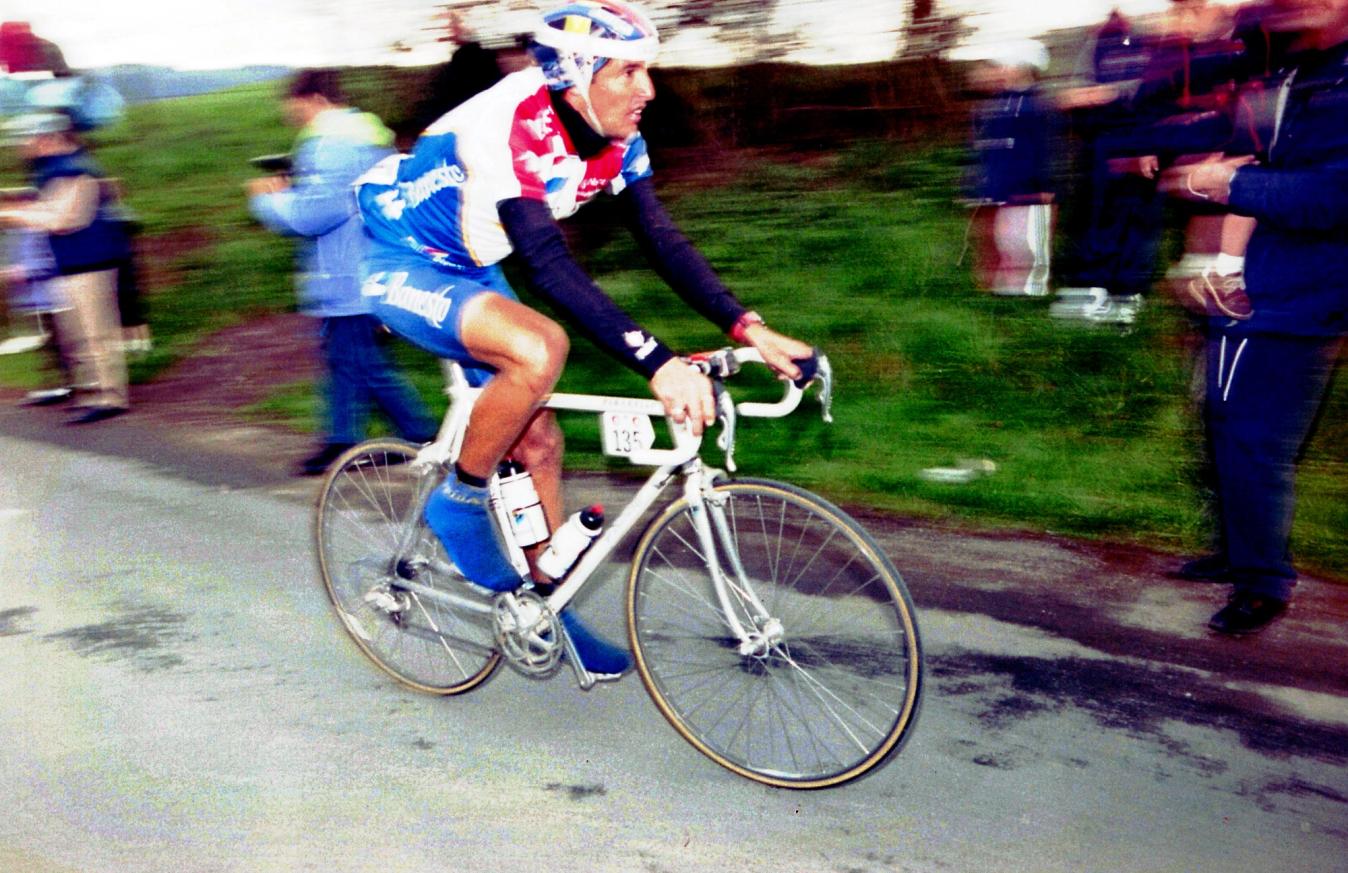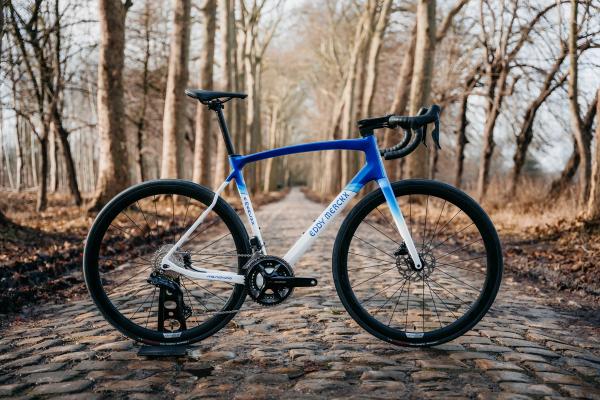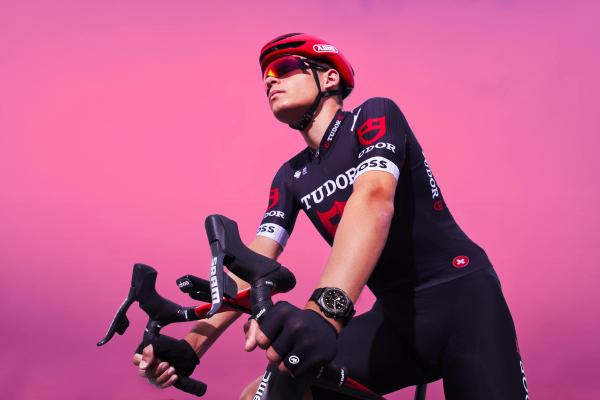Banesto Pinarello team bike: Is this vintage bike from the mid-90s the pinnacle of road bikes?
Si Richardson puts a 1990s Pinarello Dyna to the test against a Pinarello Dogma to see if it is the ‘peak bike’
Tom Hallam-Gravells
Online Production Editor
Road bikes have developed a lot since the 1990s, getting stiffer, lighter and more aerodynamic. Performance boundaries are still being stretched today as brands find ways to make their bikes faster than ever before, causing speed records in the WorldTour peloton to constantly tumble.
To some, this speed is an indication that we are reaching the pinnacle of road bike design, but there are many people within the cycling world who long for the good old days when carbon parts were a rarity and aero everything simply didn’t exist - unless you were Greg LeMond. Nostalgia often clouds objectivity and bikes from before the twentieth century - when many current pros weren’t even born - retain a mythical-like status but, far from over-glorified, they were also undoubtedly built with a combination of performance, longevity and simplicity.
This is a winning combination for many and Si Richardson believes that the pinnacle of road bike design may herald from one of these bygone eras, the 1990s, in the form of Banesto’s Pinarello Dyna. Here at GCN, we’re scientific, so we couldn’t simply take Si’s word for it. To find out if it really does stack up as the ‘peak bike’, we let Si loose on Banesto’s 1995 version of the bike before he put it to the test against Pinarello’s modern road bike, the Dogma F.
- Read more: Retro vs modern: How does 54-year-old bike gear compare to the cutting edge of modern technology?
Banesto’s Pinarello Dyna: Steeped in cycling history

© Sirotti Stefano
The Pinarello Dyna was used by Jose María Jiménez and his Banesto team in the mid-90s
Few bikes are entwined in cycling history quite as much as the Pinarello Dyna, which retains a special aura.
The model in question is from 1995 and belonged to Jose María Jiménez who was a part of the all-conquering Banesto team which dominated the Tour de France throughout the first half of the decade. Courtesy of the great Miguel Induráin, it swept up five consecutive titles in a row between 1991 and 1995 as the Spaniard became the joint-most successful rider in Tour de France history, joining Eddy Merckx and Bernard Hinault at the top of the rankings.
By assisting Induráin during his record-equalling victory in 1995, the Pinarello Dyna also earned its place in the history books as the last steel bike to win the Tour de France. Considering the carbon-dominated market, it’s hard to see that ever changing.

© Sirotti Stefano
Banesto's team-edition Pinarello Dyna bikes were crafted by legendary frame builder Dario Pegoretti
Of all the bikes that could have taken that label, the Dyna is arguably the most fitting as, far from ordinary, it was crafted by Dario Pegoretti. Arguably the most iconic frame builder of all time, pro cyclists would go to great lengths to secure his services and in the mid-1990s Banesto and Pinarello secured the Italian’s services for all of their team-edition bikes.
With the help of the master craftsman, Pinarello produced a bike that blended performance, great looks, simplicity and a low cost, at least by modern pro-bike standards, into one package. There were none of the fancy gizmos and frame shapes that adorn modern bikes. This was a performance bike in its simplest form.
Is the Pinarello Dyna the ‘peak bike’?
There is a lot of aura and romance around the Pinarello Dyna, driven by its illustrious history at the hands of some of the sport’s biggest stars.
None of this history actually matters when it is time to ride the bike, though. To be the ‘peak bike’, it needs to blend all of the key design ingredients into one ultimate package.
That doesn’t necessarily mean speed or performance, although this is a factor. It’s all about the bike’s overall character and how it manages to balance the multiple different factors that filter into the design, such as performance, weight, simplicity, looks and the overall character of the bike when riding it.
Naturally, the Dyna falls behind its modern rivals in some ways, such as aerodynamics and weight, but it still packs in lots of performance too, as Si found out.
“It is actually really, really good,” he said. “Surprisingly so. I was surprised at how stiff the bike feels under power. This is not a lugged steel frame, it’s a bike for pro cyclists and pro cyclists had a lot of wattage back then.”

The Pinarello Dyna is the pinnacle of steel frame design
It also makes up for these relatively small performance shortcomings in other ways. Steel isn’t necessarily better than other frame materials, but there’s a level of simplicity and robustness to steel that differentiates it from other materials. By the mid-1990s when the Pinarello Dyna was produced, steel bikes had been around for decades, and manufacturers had found the limits of the material. While that implies limitations, it also points to a high-quality product that manufacturers had managed to hone over decades into fine pieces of craftsmanship.
Then there’s the matter of cost, with steel packing a much friendlier price than other materials, like carbon. Sure, bikes were still expensive, but they were much lower than the high-end carbon bikes of today.
All things considered, the Pinarello Dyna is a bike that encapsulates the pinnacle of steel craftsmanship and everything that entails.
The competitor: Pinarello Dogma F
That craftsmanship is great, but is it enough to edge out a modern performance road bike for the title of ‘peak bike’? To find out Si, pitted the Dyna against a modern steed.
There was no better bike for the job than Pinarello’s modern race bike, the Dogma. Match-ups don't come much better than this. Not only have both bikes topped Pinarello’s range at one point, but they both have equally illustrious racing histories. Throughout the 2010s, and to the modern day, the Dogma was the most recognisable bike in the WorldTour peloton. Team Sky’s Chris Froome piloted it to four Tour de France titles before it claimed a further two at the hands of Geraint Thomas and Egan Bernal.
While success drove much of its fame, the bike’s unique curved tubes have also distinguished it from other bikes in the pro peloton. These curves have been toned down over the years, but the Pinarello Dogma still stands out among its peers.
They stack up well then, but how do the bikes feel to ride? To find out, Si repeated an all-out effort on both bikes to see how they compared. This was far from scientific - only one bike had a power meter - and was a chance for Si to get a feel for how the two compared, rather than basing it solely on numbers.
Watch the full video at the top of this page for Si’s comparison of the bikes and to find out if the Pinarello Dyna really is ‘peak bike’.
Let us know whether you think it is the ‘peak bike’ in the comments below.







.jpg?w=600&auto=format)


.jpg?w=600&auto=format)
